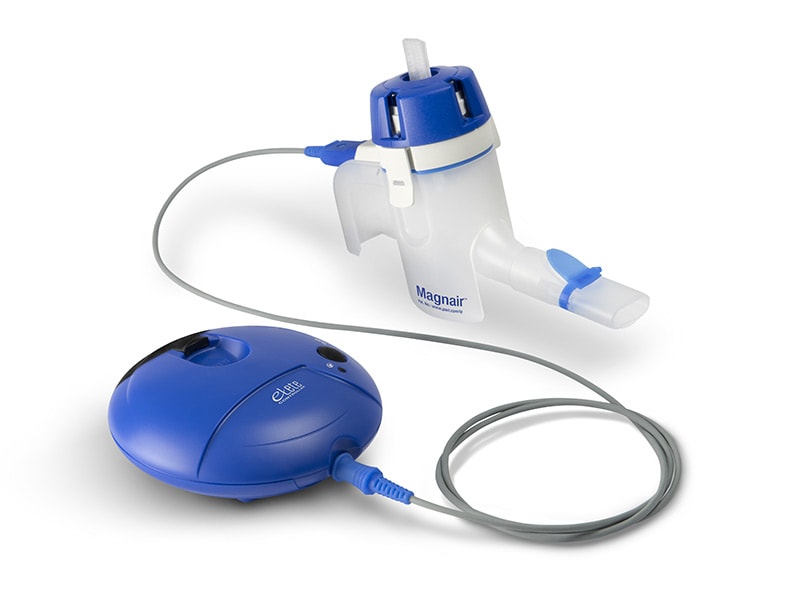

However, there is a substantial difference between the GOLD and GINA strategies. Strategy reports from both the Global Initiative for Chronic Obstructive Lung Disease (GOLD) 2020 1 and the Global Initiative for Asthma (GINA) 2019 2 highlight the importance of using the triple combination of inhaled corticosteroids (ICS), long-acting β 2-agonists (LABAs), and long-acting muscarinic receptor antagonists (LAMAs) in the treatment of chronic obstructive pulmonary disease (COPD) and asthma, respectively.


KeywordsĪsthma, COPD, triple therapy, single-inhaler Article: However, there is a real risk that the use of single-inhaler triple therapy will expand the “one-size-fits-all” approach that has conditioned the prescriptive behavior of many doctors in the recent past, with little consideration of individual patient variability when making management decisions. Pivotal trials have shown that there is a role for triple therapy, mainly for single-inhaler triple therapy, in both COPD and asthma management. Three single-inhaler triple therapies-beclomethasone dipropionate/formoterol/glycopyrronium, fluticasone furoate/vilanterol/umeclidinium, and budesonide/glycopyrronium/formoterol - are available to treat COPD, whereas no single-inhaler triple therapy has yet been approved for use in asthma, but several trials have evaluated, or are exploring, this possibility. As there is well-documented evidence that triple therapy is effective in improving lung function and reducing the risk of exacerbation in patients with asthma and those with COPD, single-inhaler triple therapies have been developed mainly to increase adherence to treatment that often is low because of complexity introduced by the additional inhaler(s). Pragmatic trials powered to detect real-life differences in HRQoL and head-to-head comparison are needed to guide clinical practice in terms of PROs.A favorable pharmacological interaction between long-acting β 2 agonists, long-acting muscarinic receptor antagonists, and inhaled corticosteroids (ICSs) explains why triple therapy is effective both in chronic obstructive pulmonary disease (COPD) and asthma however, it has been documented that the presence of an ICS may cause the occurrence of pneumonia. Moreover, due to the different molecule properties, treatment schedule, and device characteristics of each FDC, a generalized judgment seems inappropriate. Conclusion: LABA/LAMA FDCs may be helpful in improving HRQoL, but because of the heterogeneity of performed trials, strong conclusions cannot be drawn.

In 5 out of 6 RCTs having LABA/ICS as comparators, LABA/LAMA FDC had a similar effect and only 1 showed significant improvement in HRQL compared to LABA/ICS FDC. LABA/LAMA FDCs significantly improved HRQoL versus placebo in 9 out of 11 trials, while change when compared to other LABA or LAMA monocomponents was significantly better in 11 out 24. Using the St George’ s Respiratory Questionnaire, 27 out of 28 trials assessed HRQoL. Results: Twenty-eight RCTs ( n = 32, 165 COPD patients) investigating the impact of fixed LABA/LAMA combinations on HRQoL were included. Methods: A systematic literature search for randomized controlled trials (RCTs) about the impact of LABA/LAMA FDCs versus placebo, LABA or LAMA or LABA/ICS on HRQoL in Chronic obstructive pulmonary disease (COPD) patients has been performed. Objectives: To review current available evidence about the treatment effect of fixed LABA/LAMA FDCs on HRQoL. Background: While fixed dose combinations (FDCs) of long-acting beta 2-agonists (LABAs) and long-acting muscarinic antagonists (LAMAs) are increasingly tested on their efficacy in improving lung function, their effectiveness on Patient Reported Outcomes (PROs) such as Health Related Quality of Life (HRQoL) and Health Status (HS) deserve more attention.


 0 kommentar(er)
0 kommentar(er)
